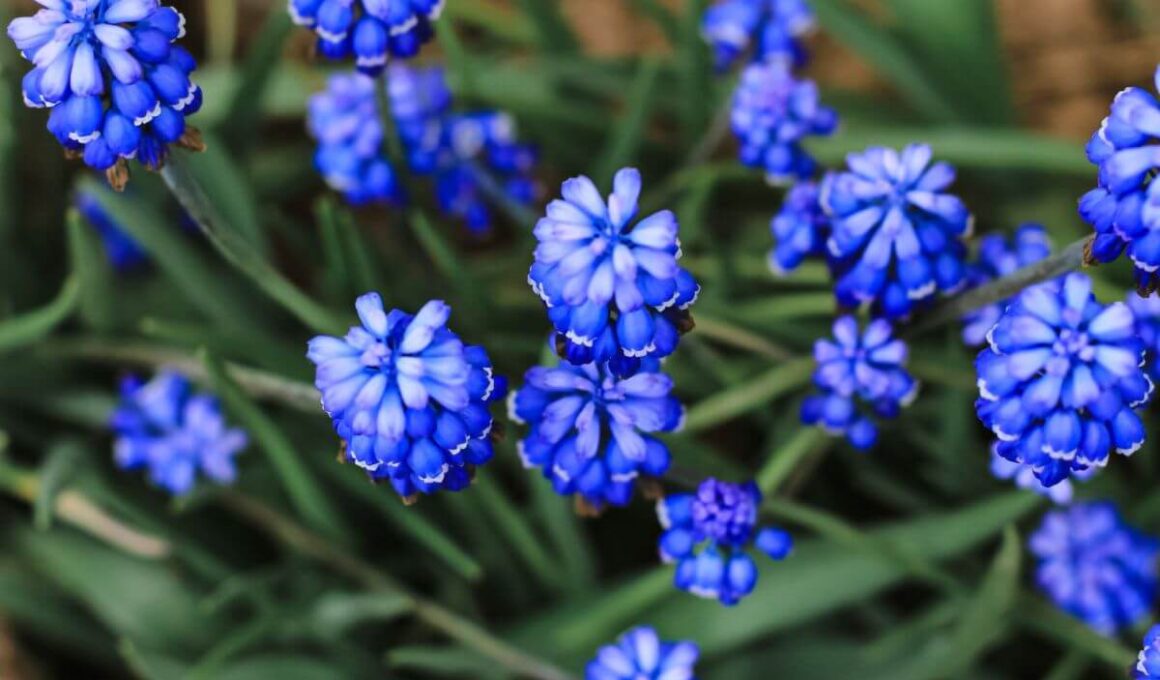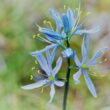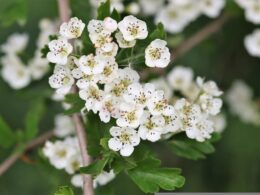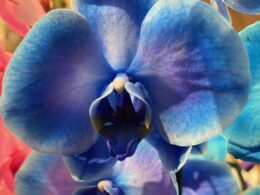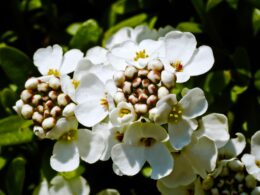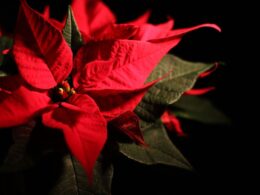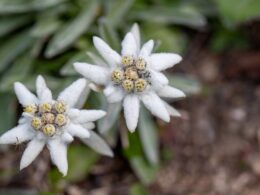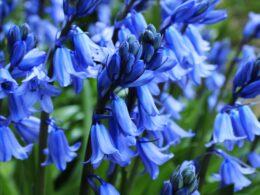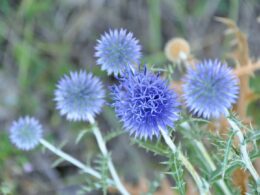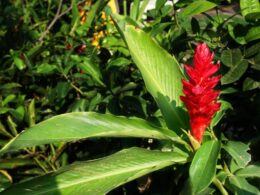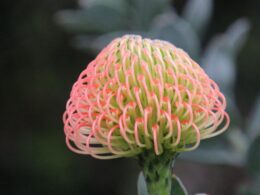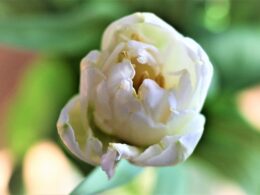About Grape Hyacinth (Muscari) – Species and Origin
The grape hyacinth (Muscari) is a small, bulbous plant that is part of the lily family. It’s native to Eurasia, and it has been introduced to other parts of the world as an ornamental plant. There are 42 species of muscari flowers, but only some of them are cultivated – most commonly:
- Muscari armeniacum (Armenian grape hyacinth);
- Muscari aucheri (Aucher-Éloy grape hyacinth);
- Muscari latifolium (broad-leaved grape hyacinth).
The grape hyacinth typically blooms in mid-spring, at the same time as tulips and daffodils. The flowers range in color from blue to purple, and the plant gets its common name from their shape, which resembles clusters of grapes. Grape hyacinths are a popular choice for gardens and flower beds, and they’re often used in bouquets and floral arrangements.
Muscari Flower vs. Hyacinth – What’s the Difference?
People often confuse muscari flowers with hyacinths, but they’re actually two different plants. True hyacinths belong to the genus Hyacinthus, which in turn belongs to the same family (Asparagaceae) and subfamily (Scilloideae) as Muscari. Here’s how to tell them apart:
- Muscari flowers are small and spherical with a ‘mouth’ at the end, while hyacinths are larger and more robust, with open flowers that have easily distinguishable petals.
- Muscari plants have long, thin leaves that grow close to the ground, while hyacinths have broader leaves and taller stems.
- Grape hyacinths are typically blue or purple, while true hyacinths come in a wider range of colors, including white, pink and red.
In general, grape hyacinths have a subtler, more delicate appearance than hyacinths. They can look good together, but if you want a more impactful display, it’s best to choose one type of plant or the other.
Another plant grape hyacinths are confused with is Liriope muscari. This plant is also known as big blue lilyturf or monkey grass, and it’s actually not a member of the Muscari genus. It has violet-purple flowers that bloom in the summer.
Grape Hyacinth Varieties and Cultivars
Like all ornamental plants, muscari flowers have been bred to create different varieties (cultivars) with different colors, shapes and sizes. Some of the most popular muscari cultivars include:
- M. armeniacum ‘Christmas Pearl’ – an early-blooming variety with soft violet blue flowers.
- M. armeniacum ‘Jenny Robinson’ – a long-blooming cultivar with the palest blue flowers that are almost white.
- M. armeniacum ‘Saffier’ – a compact plant with violet-blue buds and green tips. The buds never open, which makes for a long-lasting display.
- M. ‘Pink Surprise’ – an unusual pink variety, with a cotton candy-like hue.
As you can see, there’s a muscari flower to suit every taste! Whether you’re looking for a traditional blue variety or something more unusual, you’re sure to find what you’re looking for.
How to Grow Grape Hyacinths
If you’re interested in planting muscari bulbs in your garden, there are a few things to keep in mind. Muscari plants prefer moist, well-drained soil (acidic to neutral and not too rich) and full sun to partial shade. They’re not very tolerant of drought until they establish themselves, so make sure to water them regularly.
Bulbs should be planted in the fall, 3 inches apart and at a depth of about 3-4 inches. You can plant them individually, or in groups for a more dramatic effect. Once they’re in the ground, muscari plants are relatively low-maintenance. They don’t need to be fertilized, and they’re not susceptible to pests or diseases.
One of the great things about muscari flowers is that they naturalize easily. This means that once they’re established, they will spread and multiply on their own. If you want to control their growth, you can dig up the bulbs in the fall and replant them where you want them to grow.
Ideas for Using Muscari Flowers in Your Garden
There are lots of ways to use muscari flower bulbs in your garden. You could plant them along walkways and paths for a pop of color. Or, use them as a border around flower beds or gardens – some varieties, like ‘Saffier,’ stay compact and are perfect for this purpose.
For a carpet of color, plant them in masses in a large area. This is especially effective if you choose two varieties with contrasting colors, like ‘Night Eyes’ and ‘Pink Surprise’.
Grape hyacinths also make great cut flowers. They look beautiful in bouquets, and they last a long time in vases. You can even dry them and use them in dried flower arrangements. If you cut them when the buds are just starting to open, they will last even longer.
What to Do With Muscari After It Flowers?
After muscari flowers have bloomed and their blooming season is over, you have a few options for what to do with the plant. You can leave the bulbs in the ground, and they will naturalize and spread, or you can dig them up and replant them elsewhere. You can also cut the flower stems and dry them for use in dried flower arrangements.
No matter how you choose to use them, muscari flowers are a great addition to any garden. So why not give them a try? You might be surprised by how much you enjoy growing them!





